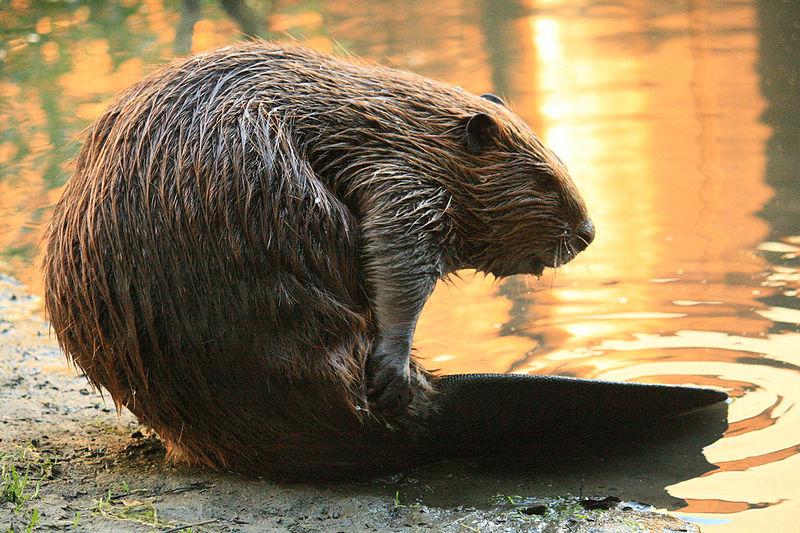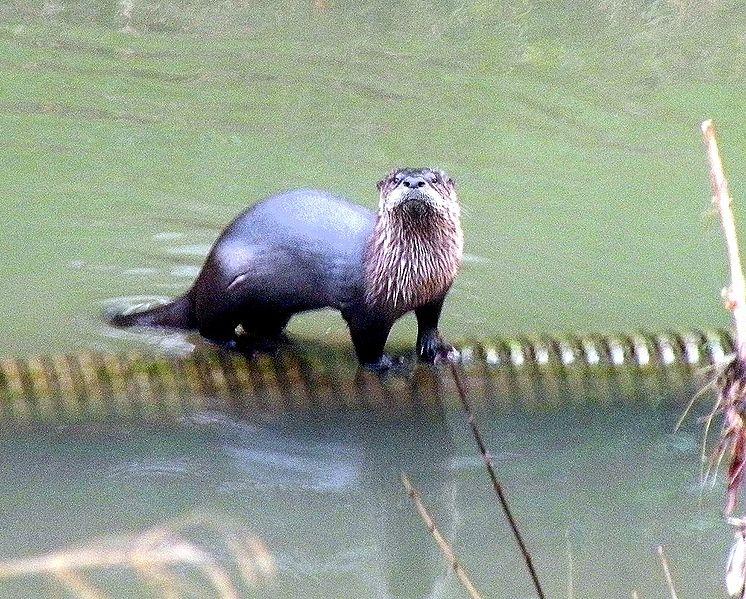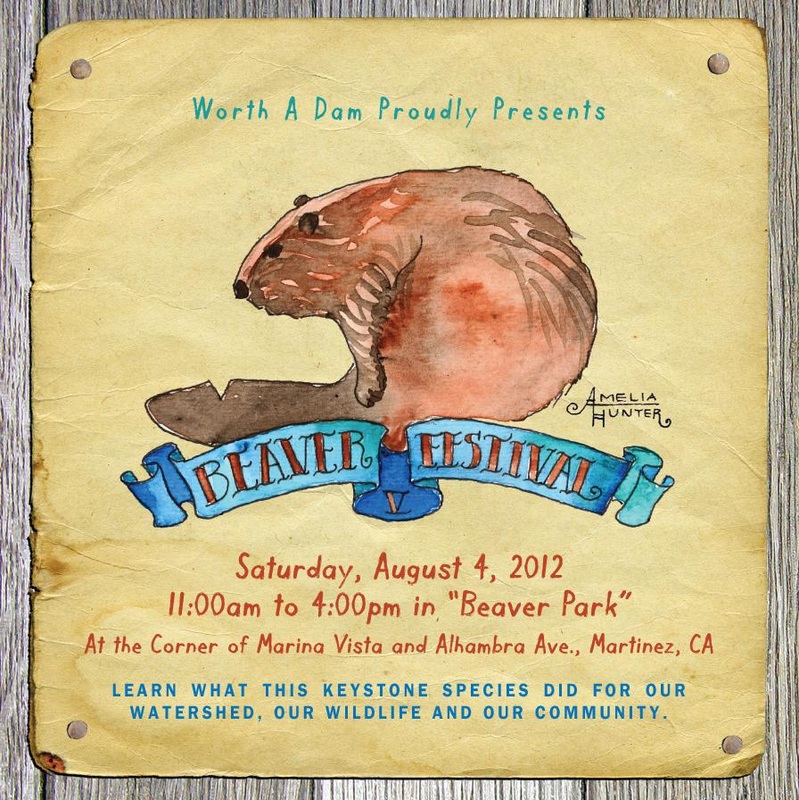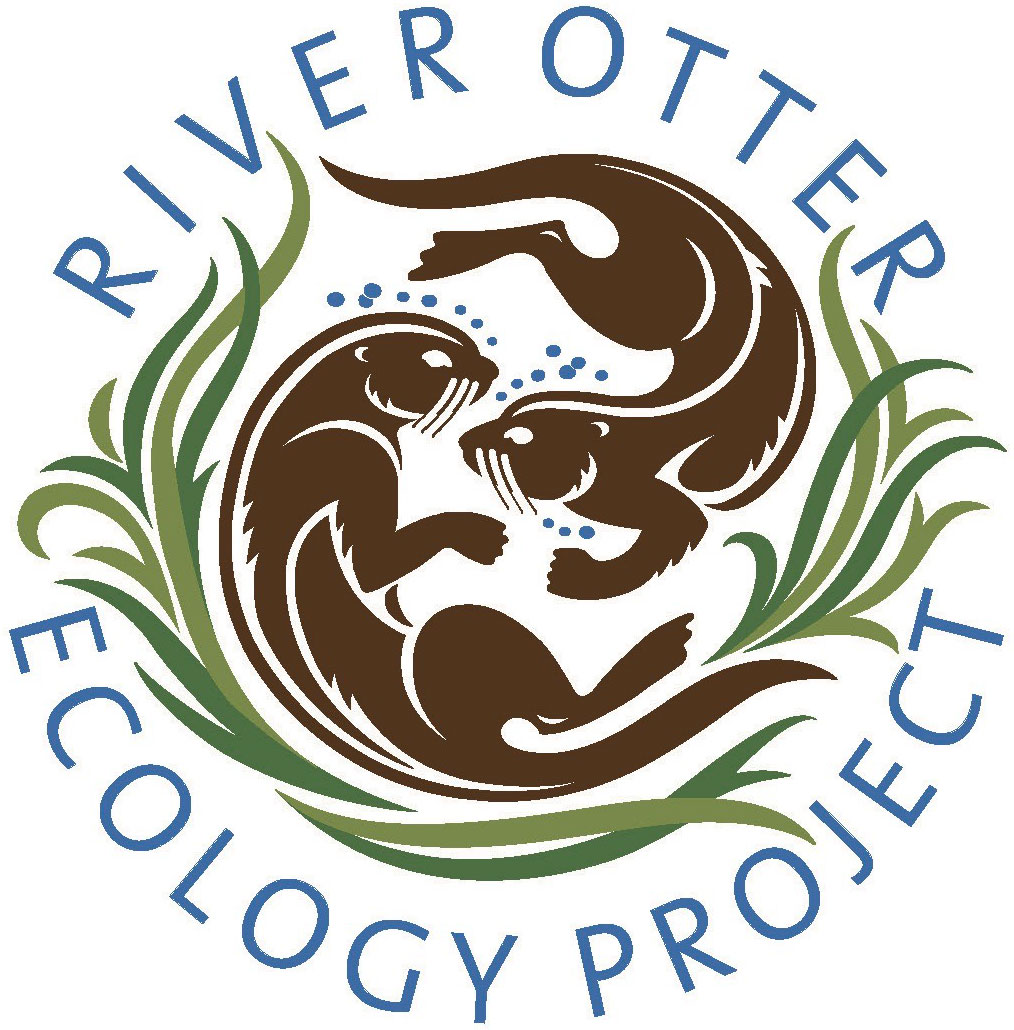By guest blogger Heidi Perryman of Worth A Dam
April 30, 2012
“The thing is — a landscape that suits beavers becomes one that suits otter so the two, while not friends, are almost inseparable.”
Do you remember as a child that kid on the block that always went to your school, shopped with her mom at the same store, and hung around where you wanted to play but was never exactly a ‘friend’? Maybe she was too rude or too bossy or too uncool to actually play with, but she was never very far away. In fact, as you grew up you might or have gotten braces from the same dentist, worked in the same factory or married cousins from the same family. Regardless of your particular likes and dislikes, your fate seemed tangled up with hers: linked forever by circumstances that played a more essential role in both your developments than character.
This is the fate of the otter and the beaver.

Konrad Gesner Woodcutting: 1558
As the founder of Worth A Dam and an early advocate for the famous Martinez Beavers, I ended up knowing a lot more about both species than I ever planned. This 16th century portrayal makes me laugh and conveys something of the attitudes both creatures have conjured over the centuries. Neighbors in every way but neighborly, beaver and otters couldn’t be much more different. Otters are thrill seeking opportunistic fish eaters that troll vast territories for their daily meal. Beavers are family oriented herbivores that stay in one place and sculpt the same landscape over and over again until it matches their needs.
The thing is — a landscape that suits beavers becomes one that suits otter so the two, while not friends, are almost inseparable.

Yearling Beaver Grooming. Photo by Cheryl Reynolds, Worth A Dam
This is true even though otter [carnivores] are considered a threat to very young beaver kits. While there is controversy among researchers as to whether otters actually predate beaver when they can get them, what I’ve seen from our local beavers seems to indicate that their furry minds at least are made up. Although their arrival is ignored most of the year, each May when otters that visit the beaver pond they are greeted with a series of very loud tail slaps until they saunter nonchalantly away. I first saw this on an early visit to the beavers in 2007 when I discovered a very large otter sitting atop the beaver lodge. It was so early in the story that at the time I admittedly remember saying in confusion, ‘That’s not a beaver, right?”

Beaver kit chewing poplar. Photo by cheryl Reynolds, Worth A Dam
The father beaver soon chased that otter away and sent the waters echoing with a total of nineteen memorable tail slaps! Since that time I have never observed more than one or two at a time and they seem most likely to occur in the spring. We know that otters like to rest and den in abandoned beaver lodges and on two separate occasions I saw eager otters try to enter the beaver lodge only to be roundly chased out by mom beaver or one of the yearlings.

River otter on flow device. Photo by Lory & Ron Bruno, Worth A Dam
One young otter in 2010 was renowned for using the pipe of the flow device as a kind of “waterslide” to climb through to the beaver pond. He could be heard noisily banging his way through the PVC and would emerge on the other side out of the filter, slip through the protective fencing and begin devouring available fish. I like to say that he eventually ate so many fish that he stopped fitting IN the pipe and had to cross over the dam like everyone else. Whatever the reason, he eventually stopped coming.

The fact remains: beaver dams create ideal conditions that improve fish population density and diversity. In fact, in Oregon and Washington beaver ponds on public lands are protected as essential fish habitat and NOAA has been active in promoting this. Not waiting for California to get on board otters are already drawn to our beaver ponds where they are sometimes unwelcome and mostly ignored. As an avid canoe-er, I am used to finding river otter along the Albion, Navarro or Russian rivers, but I never understood how urban their population could be until I started watching beavers. It has become a predictable surprise to be looking downstream for the familiar “V” of the low swimming beaver and see one or two heads pop up suddenly out of the water as if they were standing on ladders below its surface. Otter visitors! Enjoyed around town for a couple hours or a couple days before leaving as suddenly as they arrived.
Watching the neighborhood activity never fails to make me smile. Surely, as different as the two species are, they both need the same things — habitat and clean water. When one is harmed the other will suffer, and nothing we can do to protect the first will hurt the second! This summer’s Beaver Festival will celebrate the role of beavers and creeks with a fitting display from the River Otter Ecology Project. Otter peeps should join us on August 4th from 11-4. I hope we will see you all there to learn your stories of these two remarkable species!

